The kitchen is often the heart of the home—and for many homeowners, the most tempting room to splurge on. Between Pinterest inspiration boards and reality TV renovations, it’s easy to believe that luxury equals value. But some kitchen upgrades look expensive and glamorous while offering very little actual return. Before you commit to that marble waterfall island or smart faucet, consider this list of “luxury” kitchen upgrades that often just drain your wallet.
1. High-End Smart Appliances
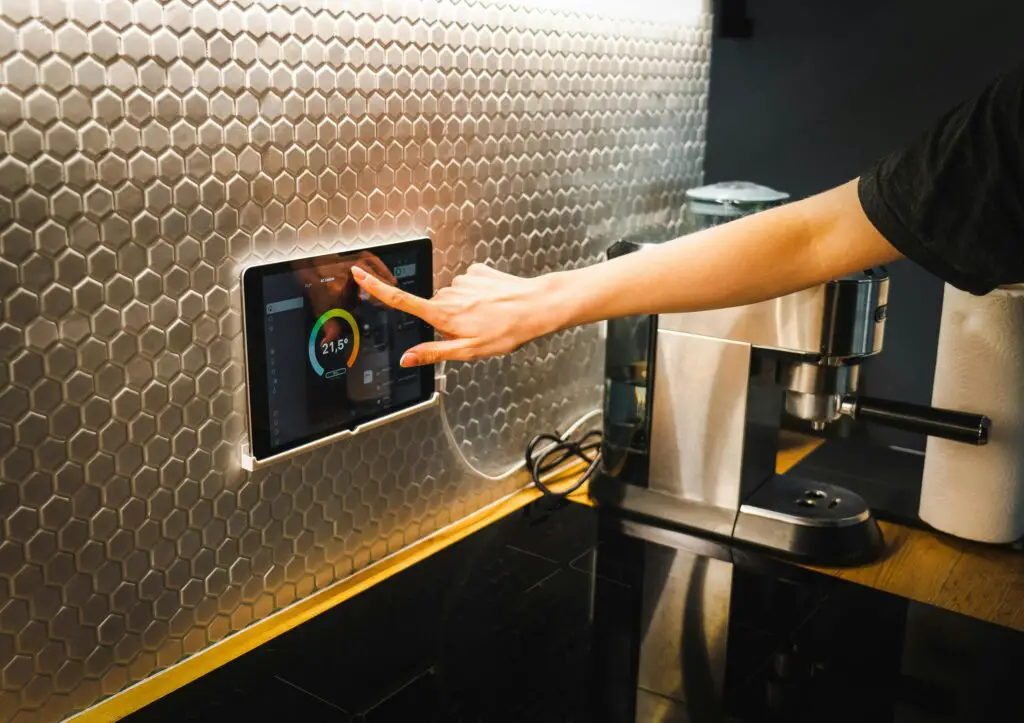
Luxury smart appliances may seem cutting-edge, but according to The Verge, they often don’t offer a high return on investment. Touchscreen refrigerators, Wi-Fi-connected ovens, and smart dishwashers sound convenient, but they can be glitchy and expensive to repair. For most homeowners, the added tech features go unused after the novelty wears off. Plus, updates in smart tech happen so fast that your $5,000 fridge may feel outdated in just a few years.
Buyers may be impressed by a sleek appliance package, but they’re not necessarily willing to pay more for it. Many real estate agents advise focusing on reliability over bells and whistles. Smart appliances can also pose compatibility issues down the road. In the end, you’re often paying more for features you’ll barely use.
2. Marble Countertops
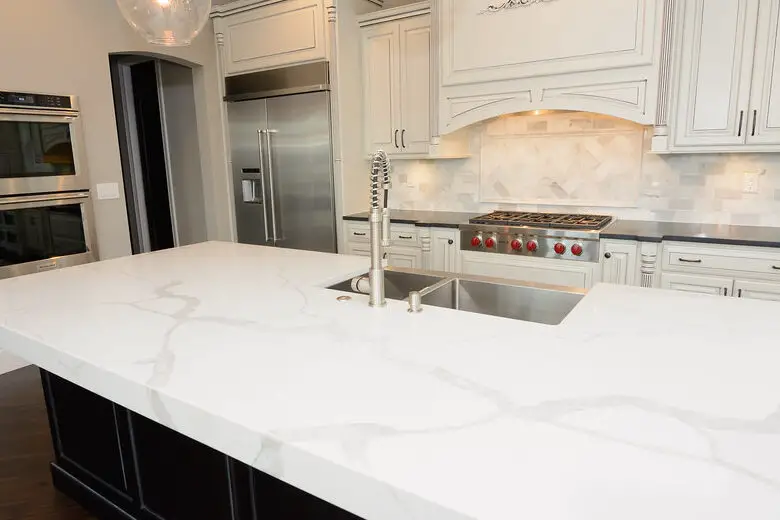
As noted by HGTV, marble countertops are a design dream—but they’re also high-maintenance, stain-prone, and outrageously expensive. They photograph beautifully and evoke an upscale, European aesthetic, but their porous nature makes them a nightmare in a busy kitchen. A single splash of red wine or lemon juice can leave a permanent mark. That’s a big risk to take for something that’s supposed to be functional.
Plenty of alternative surfaces—like quartz—offer the same elegance without the upkeep. Even seasoned home chefs often avoid marble due to its fragility. For the cost, it’s not a practical upgrade for most families. It looks luxurious, sure—but it doesn’t stand up to real life.
3. Custom Cabinet Inserts and Pull-Outs
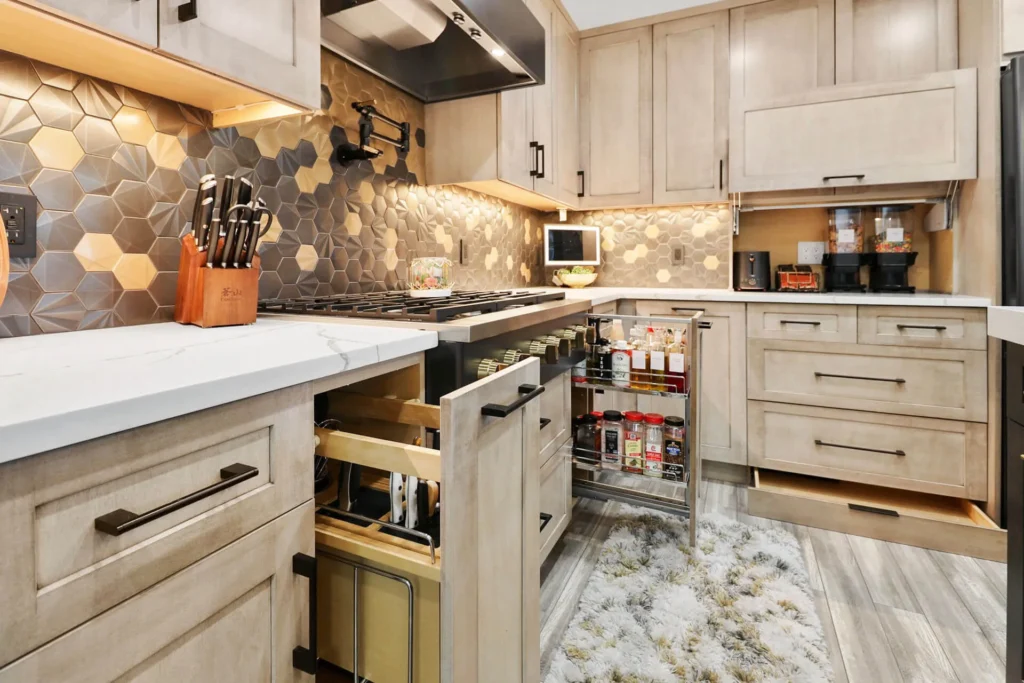
According to Houzz, custom pull-out shelving and spice racks are a top “nice to have” feature—but they don’t translate to higher home value. These organizational upgrades are often marketed as game-changers, but they rarely justify their steep cost. Homebuyers may appreciate the thought, but they’re unlikely to pay extra for a cleverly hidden trash bin. In fact, many buyers would rather install their own systems that match their habits.
The price of custom inserts can balloon quickly, especially if you’re doing more than one cabinet. While they make your current life slightly easier, they won’t necessarily appeal to everyone. Organization preferences vary from person to person. What works for you might seem like overkill to someone else.
4. Pot Fillers

Pot fillers—those retractable faucets over the stove—might scream “chef’s kitchen,” but their actual usefulness is up for debate. As noted by MYMOVE, they’re one of the most overrated kitchen features, offering style over substance. They do save a trip to the sink, but they don’t eliminate the need to carry a heavy pot back when draining it. Plus, they’re a plumbing headache if they ever leak or malfunction.
They also require extra water lines and can increase installation costs substantially. Most home cooks find they use the feature less than they thought they would. If anything, it becomes a quirky conversation piece rather than a daily essential. For the cost, a high-quality pull-down faucet at the sink is usually a better investment.
5. Built-In Coffee Stations

A built-in espresso or coffee bar feels like a dream come true for caffeine lovers—but they often don’t justify their cost. These setups can run into the thousands, especially if you add plumbing, cabinetry, and a high-end built-in machine. But coffee preferences are deeply personal, and your dream machine may not impress the next homeowner. What you see as a luxury, they might see as a space-waster.
Appliance lifespan is another concern—built-in coffee systems can be tough (and expensive) to repair. A sleek countertop espresso machine usually delivers the same result for far less. And if your coffee habits change, you’re stuck with a giant feature you no longer love. In most kitchens, flexibility is more valuable than a built-in latte maker.
6. Designer Range Hoods
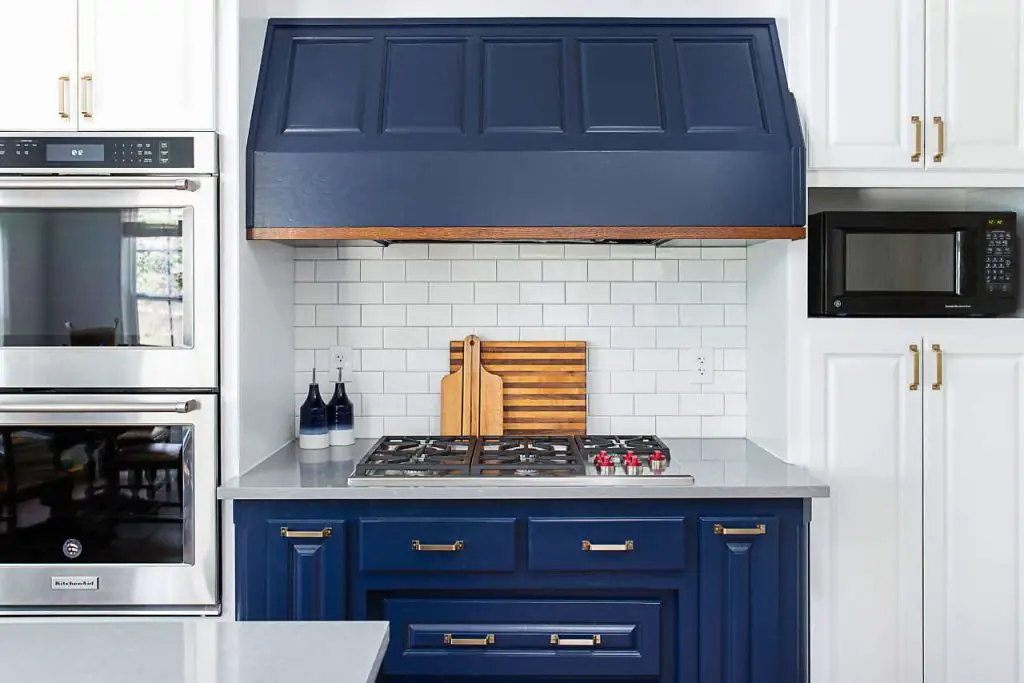
Oversized, custom range hoods can be visually stunning, but they don’t always perform any better than standard models. Many homeowners spend thousands on a handcrafted copper or sculptural wood hood, only to realize it functions exactly like a $300 stainless steel one. If the venting system behind it isn’t powerful, the aesthetic upgrade doesn’t matter. And for resale, most buyers care more about cooking capacity than decorative finishes.
In many kitchens, a large decorative hood dominates the space and limits future design flexibility. Some buyers may even see it as a distraction or a style mismatch. It’s a prime example of spending on visual drama rather than practical gain. A mid-range hood with strong suction and quiet operation usually checks all the real-life boxes.
7. Luxury Tile Backsplashes
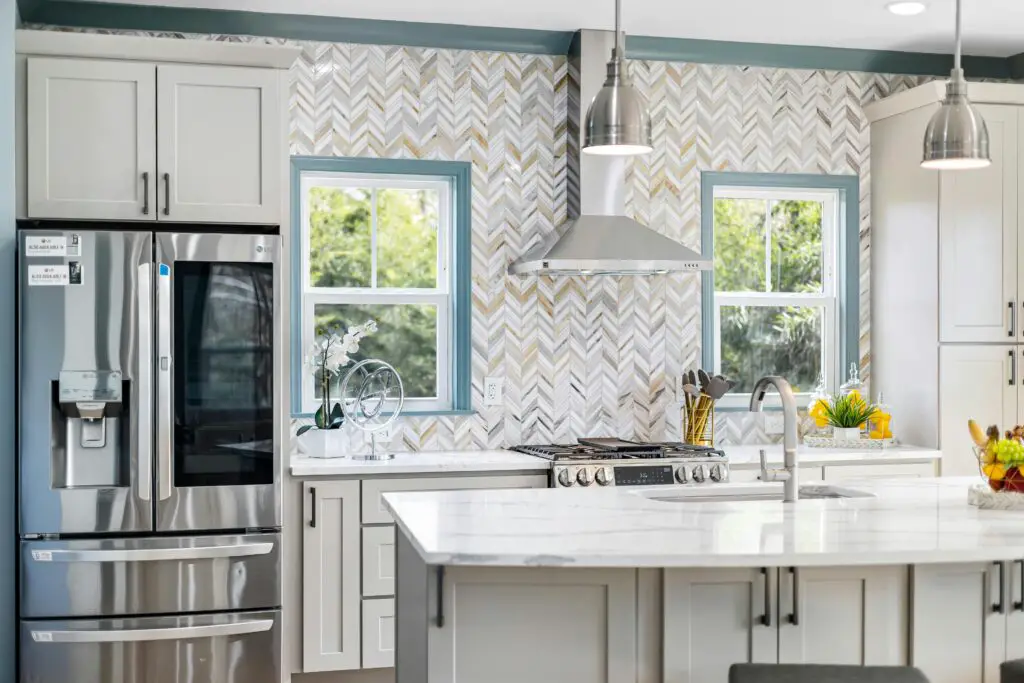
A high-end backsplash can elevate a kitchen’s style—but some materials are far more expensive than they need to be. Intricate glass mosaics, hand-painted tiles, or natural stone options can easily cost hundreds per square foot. But the backsplash is rarely a focal point for buyers—it’s considered decorative, not functional. Many would rather update it themselves than pay for someone else’s pricey taste.
Installation for complex designs can also add to your labor costs. And the more personalized the look, the less mass appeal it tends to have. Stick with timeless, neutral tiles if resale is in your future. The wow factor isn’t always worth the wallet hit.
8. Wine Fridges and Coolers
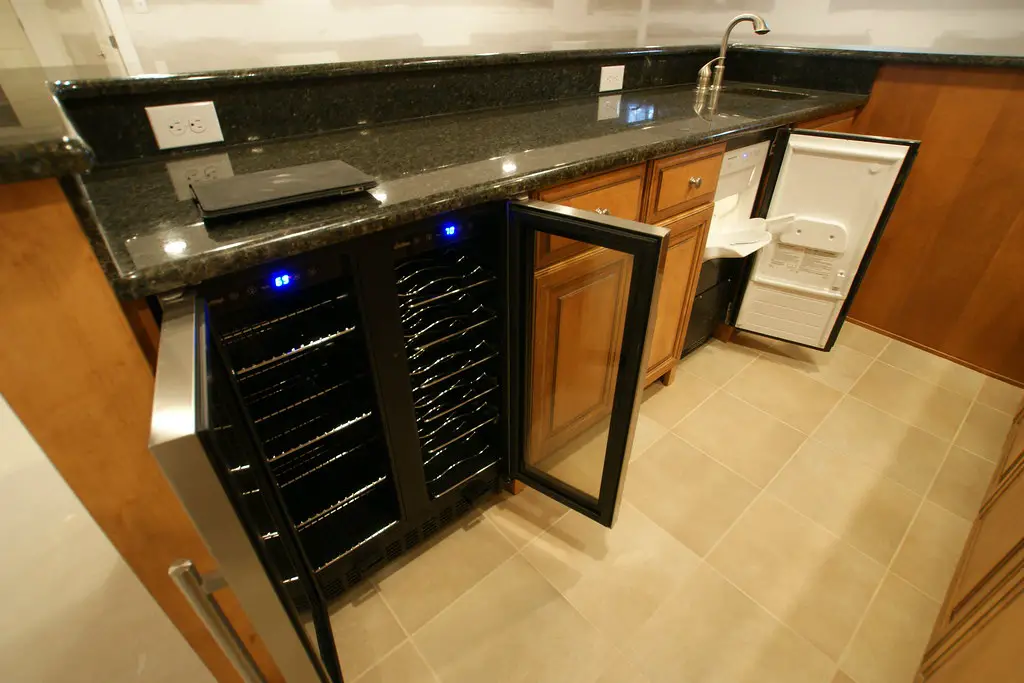
Wine coolers are a staple in luxury kitchen magazines, but unless you’re a serious collector, they’re often unnecessary. They take up valuable space and can be expensive to install, especially if you’re opting for a dual-zone or under-counter model. For many homeowners, a simple wine rack or basement storage works just fine. And casual buyers won’t see a wine fridge as a must-have feature.
Worse, the appliance can age poorly or malfunction, leaving an awkward gap in your cabinetry. If you do want one, consider a freestanding unit rather than a built-in. That way, it can move with you or be swapped out easily. Otherwise, you’re shelling out for a gadget that may never truly pay off.
9. Under-Cabinet Lighting Systems

While under-cabinet lighting is often seen as a must-have for functionality, going ultra-high-end here is rarely worth it. Smart lighting systems with motion sensors, dimmers, or color-changing LEDs look flashy, but cost significantly more than standard LED strips or pucks. Most homeowners won’t take full advantage of these bells and whistles. They’ll just want to see what they’re chopping.
Unless lighting is a central design feature, you don’t need to go high-tech. A simple plug-in or battery-powered LED system does the job just fine. Fancy systems can also be harder to repair or replace. In a kitchen remodel, there are better places to spend your money.
10. Double Islands
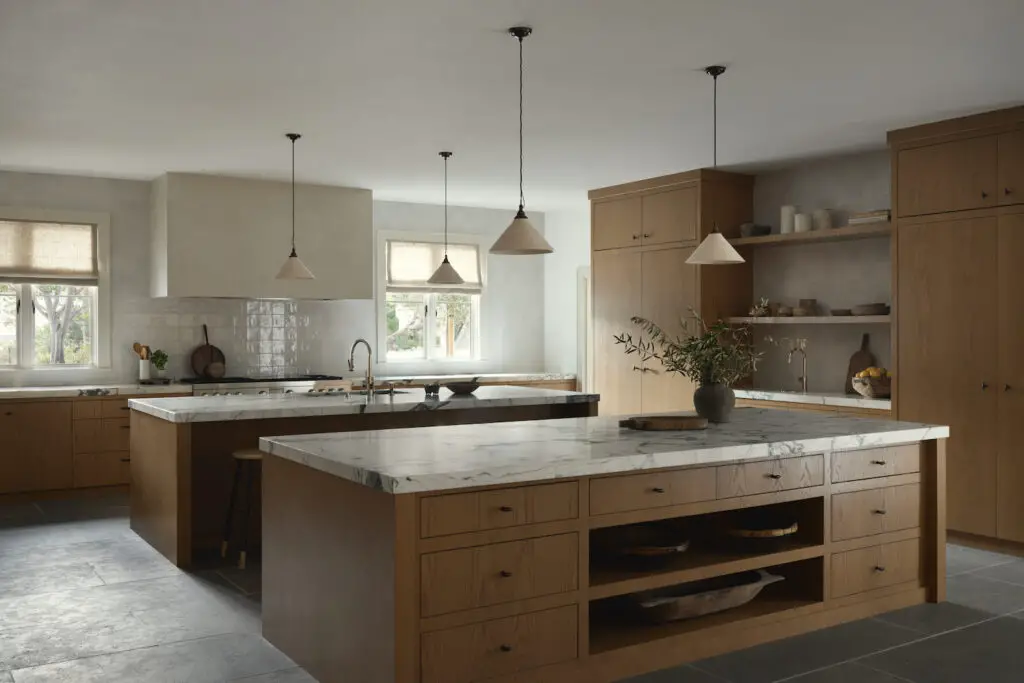
Double kitchen islands might look like something out of a celebrity home tour, but they’re usually excessive in real life. These oversized setups are meant for huge kitchens—and even then, they can feel like overkill. They take up precious floor space, can block natural light, and make the room feel congested rather than open. Unless you entertain large groups regularly, you probably won’t use both islands to their full potential.
Many homeowners regret installing double islands once they realize how much they interrupt the kitchen’s workflow. They also increase costs dramatically due to added cabinetry, countertop material, and installation labor. In smaller or even average-sized kitchens, a well-designed single island is far more functional. It’s luxury for luxury’s sake.
11. Glass-Front Refrigerators
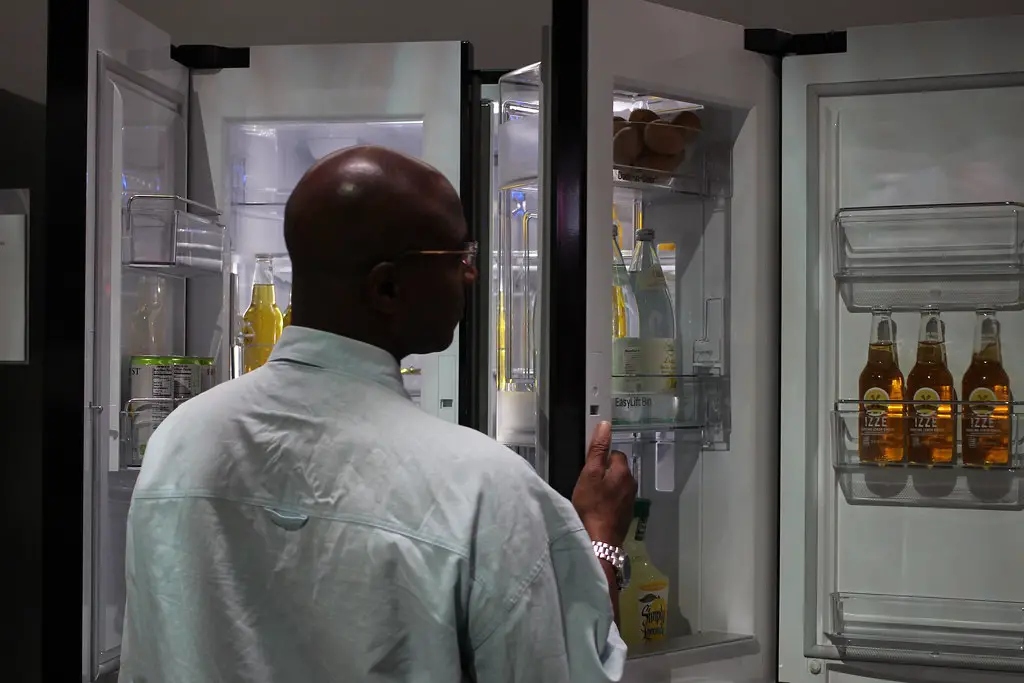
Glass-front refrigerators have that sleek, restaurant-style look—but they’re a hassle for most home cooks. You have to keep the interior perfectly organized for them to look presentable. And they’re more prone to smudges, fog, and scratches than stainless steel or panel-ready versions. It’s an upgrade that demands maintenance without offering significant functional benefits.
Unless you’re going for a very specific design aesthetic, most buyers will prefer a standard door. Glass-front fridges also tend to cost more and offer less insulation than solid doors. They’re great for high-end kitchens in open-concept spaces—but most homes don’t need or benefit from them. If you’re not running a catering company, it’s a flex that doesn’t make sense.
12. Oversized Farmhouse Sinks

Farmhouse sinks are trendy and charming—but the oversized versions can be a burden. They take up extra space in the base cabinets, are harder to clean, and often lack the versatility of a double-basin setup. Many homeowners find that their appeal wears off once they realize how much water it takes to fill one. And their apron-front design makes replacing them more complicated and costly.
You also lose out on countertop space if the sink dominates the area. While they do look great in photos, they’re not always the most functional choice. If you’re constantly soaking large pots or prepping food, a divided sink might be the better option. Trendy doesn’t always equal practical.
13. Chef-Grade Ranges
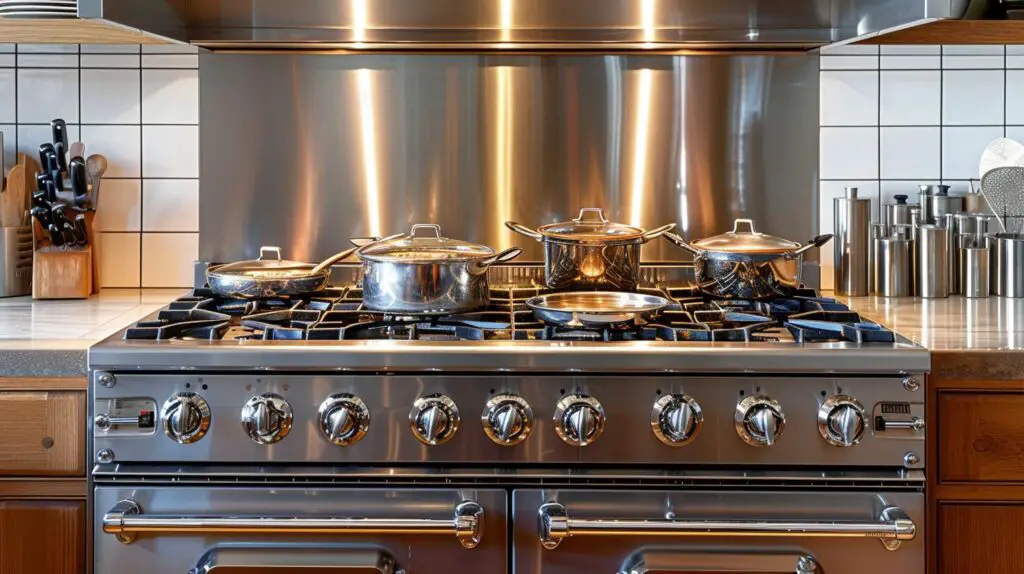
Those massive professional-grade ranges with six or eight burners look impressive—but do you really need one? Unless you’re running a test kitchen out of your home, probably not. They require special gas lines, often need additional ventilation, and come with a steep price tag. For most homeowners, a high-quality standard range will cook just as well.
Chef-grade appliances can also intimidate casual buyers when it’s time to sell. They may assume the kitchen requires more upkeep or skill than they’re comfortable with. The prestige isn’t always worth the price or hassle. Go for reliable performance, not restaurant clout.
14. Overly Customized Pantry Rooms

Walk-in pantries with customized shelves, sliding ladders, and high-end finishes might look luxe—but they can be a money pit. They’re expensive to build, especially if you’re converting square footage from another area. And many homeowners find they don’t need that much food storage unless they buy in bulk or meal-prep extensively. In smaller homes, that square footage could be put to better use.
Customization also limits flexibility down the road. If your pantry has built-ins sized for specific containers or baskets, it can’t adapt to changing needs. A well-organized cabinet or closet pantry works for most families. You don’t need a boutique grocery setup to stay stocked.
15. Statement Lighting Overload
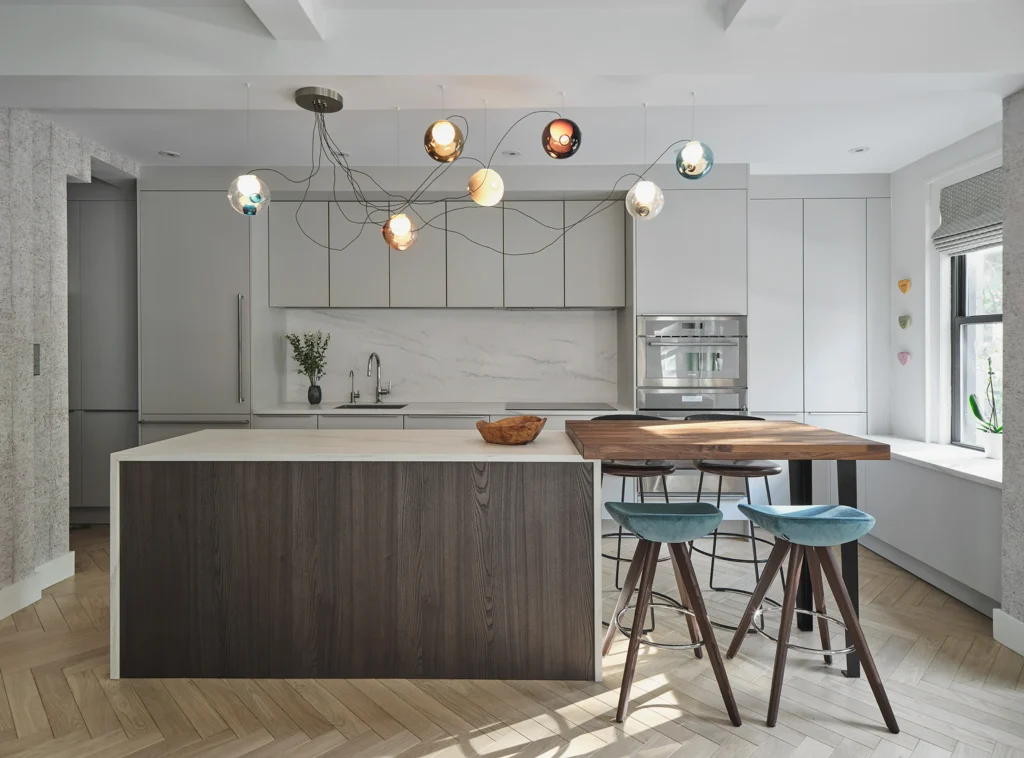
A single statement pendant or chandelier can add elegance—but going overboard with high-end fixtures is a waste. Layering fancy lights in the kitchen—like pendants, sconces, backlit cabinets, and chandeliers—can overwhelm the space and your budget. Fixtures add up fast, and trends change quickly. What looks sleek today could feel gaudy in five years.
Lighting should enhance your kitchen’s layout, not compete with it. Focus on function first: bright task lighting, ambient overheads, and well-placed accents. Then, choose just one or two stylish elements to elevate the space. You don’t need a light show to impress—less is more.
